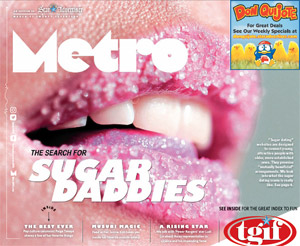Real Life
When I was in the third grade I wore a mouth retainer. My words came out thick, like how they sound now if I drink a martini.
Adding insult to injury, my family moved out of the city and I suddenly found myself surrounded not by the Italian kids I knew from the neighborhood, but by the “Goldilocks” as my sister called them. Their hair was more brunette than blonde, but they’d already perfected the art of flinging their bangs as if every strand was as luminous as Marilyn Monroe’s. I felt dark and plump and, heaven forbid, my hair was kinky and black.
I found if I didn’t speak, I could sort of fake fitting in.
And so my becoming a writer began secretly. Like a friend who listened without making fun of me, the likes of which I couldn’t find at school, my diary let me express my confusion, and like this, I wrote my way through the anxiety I felt.
Eventually, these pages became my “journal” and later my “notebook,” but even in my teens I wasn’t thinking about becoming a writer, not that I remember. What I knew was that as soon as I picked up my pen, my fear settled down. And by the time I finished wondering and questioning, I felt connected to a process that made me feel safe. And later, at the dinner table (though my family still said “supper”) when my mother asked me how my day had gone, I could say “fine” and almost mean it.
Today, when I read one these entries — like when the cheerleaders put Curl Free in my locker, or the crush I had on Steven Rannenberg that made me start off by saying, “You’re going to think I’m crazy, but …” — I can see how, more than anything, I was beginning to understand that life at school would get better, or it wouldn’t, but, either way, I’d found my voice.
Now whenever I appear as a speaker and I’m asked how I began writing, I say that I owe my writing life to the blog of my day. Except I wasn’t writing for an audience. There was no pressure to perform. This private connection is how I learned to be honest.
Which is what I said, in a roundabout way, on my recent book tour to the gal at Blooms-bury Books in Ashland, Oregon, when she asked if she needed an agent to get her book “into the universe.”
“What’s your book about?” I asked.
“Sacred sound vibration devotional chanting circles,” she said. I felt very square. I mean, was I that un-Ashland? And while wondering if maybe there is a little too much lithium in the Lithia water the town is famous for, I managed to say, “I think whenever you combine what you love to do with what you know how to do, the cross-pollination tells a great story.” Which didn’t come close to answering her question, I know. But I felt lit up inside in the same way I couldn’t wait to get home from school to write about the time the heaviest girl in our gym class put the meanest one in her place by saying, “My butt may be big, but it will never be as big as your mouth.”
And I remembered why I love to write this piece once a month, and non-fiction in general: I love real life. I love the stories that come from real people.
Honest to God, I could never make that woman in Ashland up.
Mary Lou Sanelli is an author whose latest book is A Woman Writing. When not working as a literary speaker on the Mainland, she lives in Honolulu. For more of her work, visit marylousanelli.com.
“A SHARED SPACE” is an ongoing reader-submitted column. To share your story, email coconnor@midweek.com

